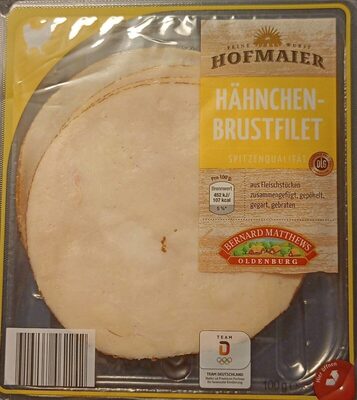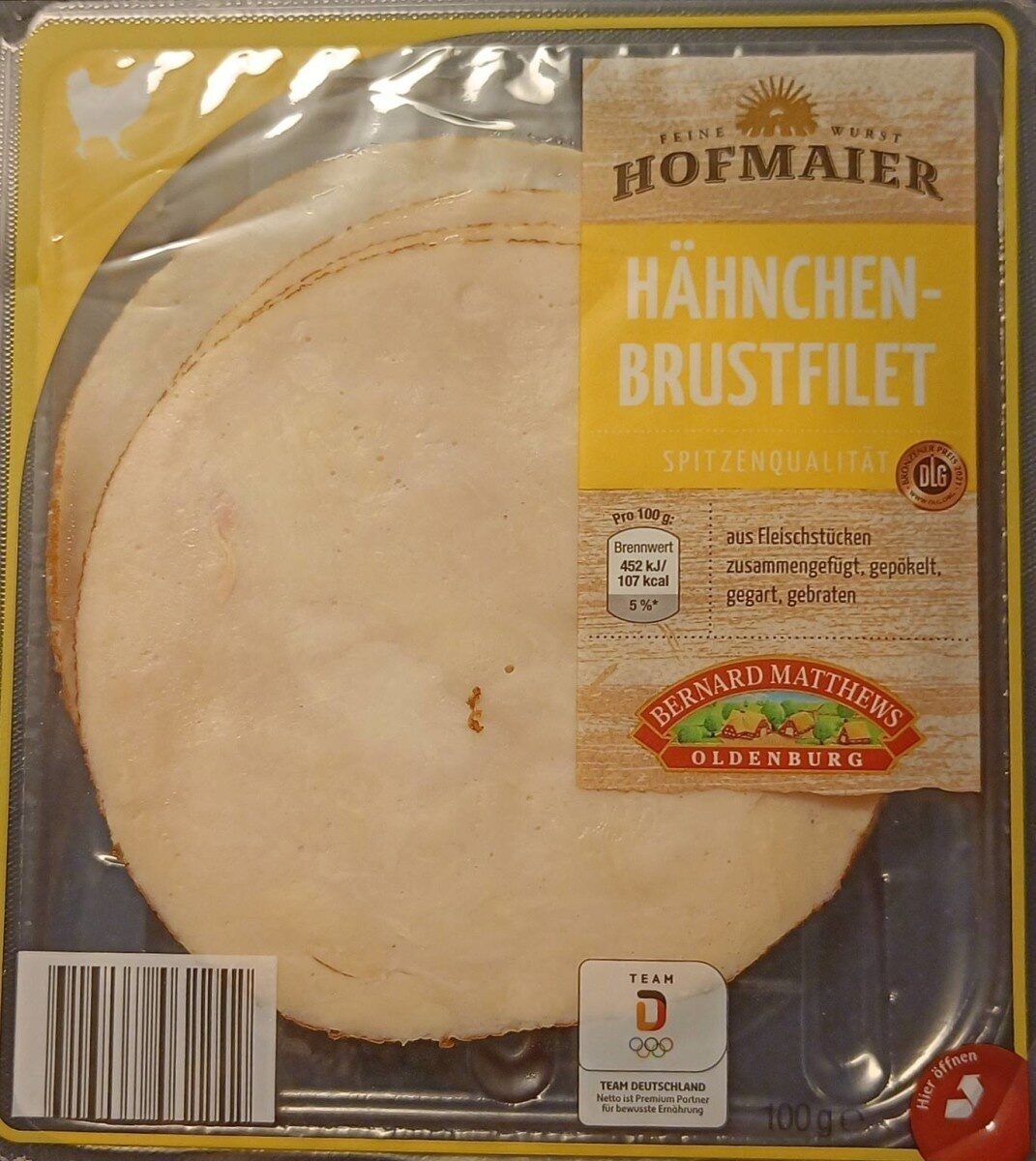Hähnchen Brustfillet - Hofmann - 100g
This product page is not complete. You can help to complete it by editing it and adding more data from the photos we have, or by taking more photos using the app for Android or iPhone/iPad. Thank you!
×
Barcode: 4316268462242 (EAN / EAN-13)
Quantity: 100g
Packaging: Plastic
Brands: Hofmann, Bernard Matthews Oldenburg
Categories: Meats and their products, Meats, Prepared meats, Chicken and its products, Poultries, Chickens, fr:Charcuteries cuites, Poultry hams, Chicken breasts, Cooked chicken breast slices, Cut
Labels, certifications, awards:
German Agricultural Society, Gold medal of the German Agricultural Society, 2017 Gold medal of the German Agricultural Society
Traceability code: DE NI 11509 EG
Stores: Netto
Countries where sold: Germany
Matching with your preferences
Environment
Carbon footprint
Packaging
Transportation
Report a problem
Data sources
Product added on by sil
Last edit of product page on by bartolomeu.
Product page also edited by ecoscore-impact-estimator, foodrepo, kiliweb, moon-rabbit, openfoodfacts-contributors, packbot, seppl, yuka.sY2b0xO6T85zoF3NwEKvllNuDeLTjg3vbAfRknLR5MeSMKfxUYB556bcYqs.










